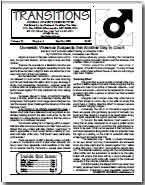
Thomas Parker, 21, sits in an empty room staring into his glass of whiskey and coke with two black eyes. He says he’s a happy person but the tears welling in his eyes tell a different story.
“Well I used to be a happy person. I couldn’t find one person that would call me angry or depressed,” he says. “But the domestic violence, the stuff she has done to me, it’s fucked with my head.”
Parker swallows his tears along with his last half of whiskey and coke. Another male victim of domestic violence whose story has gone untold.
Recently the federal government launched a $100 million women’s safety package to help combat domestic violence against women and children. Two million of that package was allocated for men but not for the victims. Instead it was used to increase funding for MensLine for tools and resources to support perpetrators not to reoffend.
With the International Day for the Elimination of Violence against Women just passing many men continue to feel excluded as victims. Excluded from government funding, from help services and from awareness and recognition.
Parker says he felt most alone when he came home to his girlfriend. She looked him in the eyes and told him she loved him then told him she cheated on him. His mind swirled with emotions. He locked himself in their bedroom and collected his things. She screamed and banged on the door. But when Parker opened it he was faced with a barrage of punches and even the blades of a pair of scissors. He covered his face but still bears the scars on his arms.
He tried to leave but the door was locked and his car keys were gone. She had left no exit and was physically abusing him. Parker feared for his safety. He picked up a chair and went to smash a window. She let out an ear-piercing scream that even the neighbours would hear. Parker fell to the floor. He was having an anxiety attack. With nowhere else to go, he spent the rest of the day with her, bruised from head to toe.
“If something is harming me physically or mentally, if it was at the point I had to ring the cops to save my life I would have but it didn’t get to that point,” Parker says.
Six years ago a diverse group of men and women formed the One in Three campaign in an effort to address what it saw as growing data that indicated males make up a substantial proportion of domestic and family violence victims.
The campaign states one in three victims of domestic violence is male, every 10 days a male will be lost to domestic homicide and almost one in four young people are aware of their mum or step-mum hitting their dad or step-dad.
The campaign points to Australian Bureau of Statistics, Australian Institute of Criminology, Attorney General’s Department and WA Department for Child Protection figures for 2010-2012, indicating only 5.3 per cent of male victims of current partner violence had contacted police.
It says the same figures showed young people were just as likely to have seen their mothers hitting their fathers as their fathers hitting their mothers. It also stated that 94 per cent of perpetrators against male victims of partner violence were women.
One in Three says males made up a substantial proportion of partner violence victims at 33.3 per cent and 38.5 per cent of domestic homicide victims.
But the One in Three campaign’s statistics have been challenged. The figure is sourced from The Australian Bureau of Statistics (ABS) Personal Safety Survey (PSS) which stated males made up 33 per cent of people who have experienced an act of violence from a current partner in the past 12 months. The point of contention, however, is the warning that comes with this statistic which states: “Estimate has a relative standard error of 25 per cent to 50 per cent and should be used with caution.”*
A question from the PSS which may been seen as more reliable asks about the respondent’s experience of violence from a previous partner since the age of 15. Of the people that answered yes to that question 21 per cent were male, making it more like 1 in 5 long term victims being male.
CEO of Micah Projects Karyn Walsh says it is “rare that one source of data is all that can be relied on”. “There are multiple references to academic data that provide different perspectives and different methodologies,” she said.
“Measuring domestic violence in its rightful context is different to measuring isolated incidents. Both are important statistics to record, confusing one with the other can be misleading and interventions addressing both may require different approaches.”
Senior Researcher for the One in Three campaign, Greg Andersen, says there’s a perception of gender roles “and the way society sees men and women”.
“It is challenging to accept that a woman who is naturally smaller and weaker than a man is able to assault a partner or contribute to domestic violence against men,” he says.
“Even in 2015 with gender roles becoming more fluid men and boys are still raised to be tough and strong about pain and to not ask for help.”
Andersen explains a lot of men facing these issues don’t talk about it in fear of being teased or feeling weak. Saying it’s not only an issue of feeling emasculated but that a lot of men have actual barriers such as working long hours or in fly-in fly-out jobs.
“When they come home they don’t want to come out to close friends or even family,” he says. “We’ve found when there is help provided in the workplace people are queuing up for it.”
Andersen says women and children are likely seen as the main focus in domestic violence due to the history of the issue gaining attention through women and the feminist movement.
“It has been 45 years since the first wave, we are now on the second wave and the issue has had a long time to sink in to the public,” Andersen said. But he says the lack of services for men is a form of discrimination noting that it’s not just male victims but also the LGBT community that don’t have help.
“It should be all victims,” he says. “Family violence is a complex messy phenomenon, it’s currently seen as just men against women and children without any complexities when in reality it could be a teenage son attacking their mother, a sister and brother, grandparents or step-parents.” “We are only addressing one side of this issue.”
Supporter of the One in Three Campaign, psychologist Dr Elizabeth Celi, says it is important to stop viewing domestic abuse and violence as gender based.
“There are many misconceptions around male victims leading to a lack of genuine education regarding men’s experience,” she says.
“One main misconception being that if we acknowledge or even mention male victims we’re somehow taking away from female victims, which is completely untrue.
“Men are not given the same kind of space or support to seek help and seek help without the risk of being ridiculed and invalidated, which we would never do to female victims thanks to important social education.”
Dr Celi said men were also causing a disservice to themselves by the “all or nothing style of thinking” when it comes to emotional management.
“In their mind this leaves them only two choices and they back themselves into a corner on how to deal with a matter,” she said.
“Men need to allow the research and support to open up several options within problem solving space and see it as a strength rather than a weakness.”
But Walsh says she does not “believe that there is any organised attempt to exclude or minimise the experience of male victims of domestic violence” and that “a vision to end domestic violence or to reduce the incidence of domestic violence does not exclude men”.
Premier Annastacia Palaszczuk said to Brisbane Times last month that she would be approaching Prime Minister Malcolm Turnbull about launching a domestic violence awareness campaign that includes male victims. Ms Palaszczuk has also changed her language around domestic violence after hearing of the men it has impacted.
“I actually did change my language when it did become public because it was brought to my attention that there was some serious issues surrounding some men in our community needing help as well,” she said. “It has to be about stopping violence.”
Parker says he wasn’t even aware services existed for male victims. “I talked to friends about it and they were always like ‘if there’s a girl out there smacking a guy she’s obviously big enough to take one herself’ but I would never do it… I couldn’t,” he says.
Parker spent 11 months being silently beaten by the girl he loved. “I didn’t f–king have help – I didn’t have anyone,” he says. Another male victim of domestic violence with nowhere to turn.
If you are a male experiencing domestic violence, contact Mensline Australia on 1300 789 978 or the National Domestic Violence Line on 1800 RESPECT (1800 737 732).
Anyone affected by the topics raised in this story can contact Lifeline on 13 11 14.
* This is incorrect. In actual fact, The Australian Bureau of Statistics (ABS) Personal Safety Survey (PSS) stated males made up 33 per cent of people who have experienced an act of violence from a current partner since the age of 15. There was no relative standard error warning for this figure.


